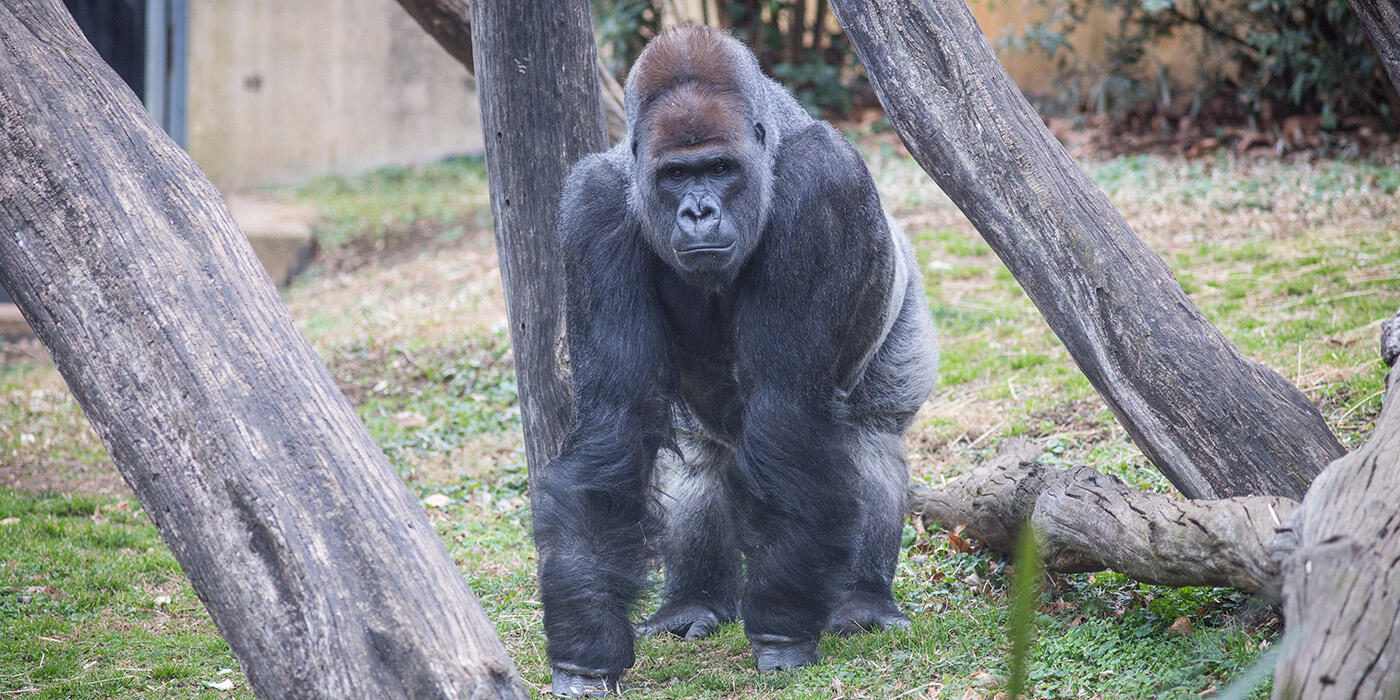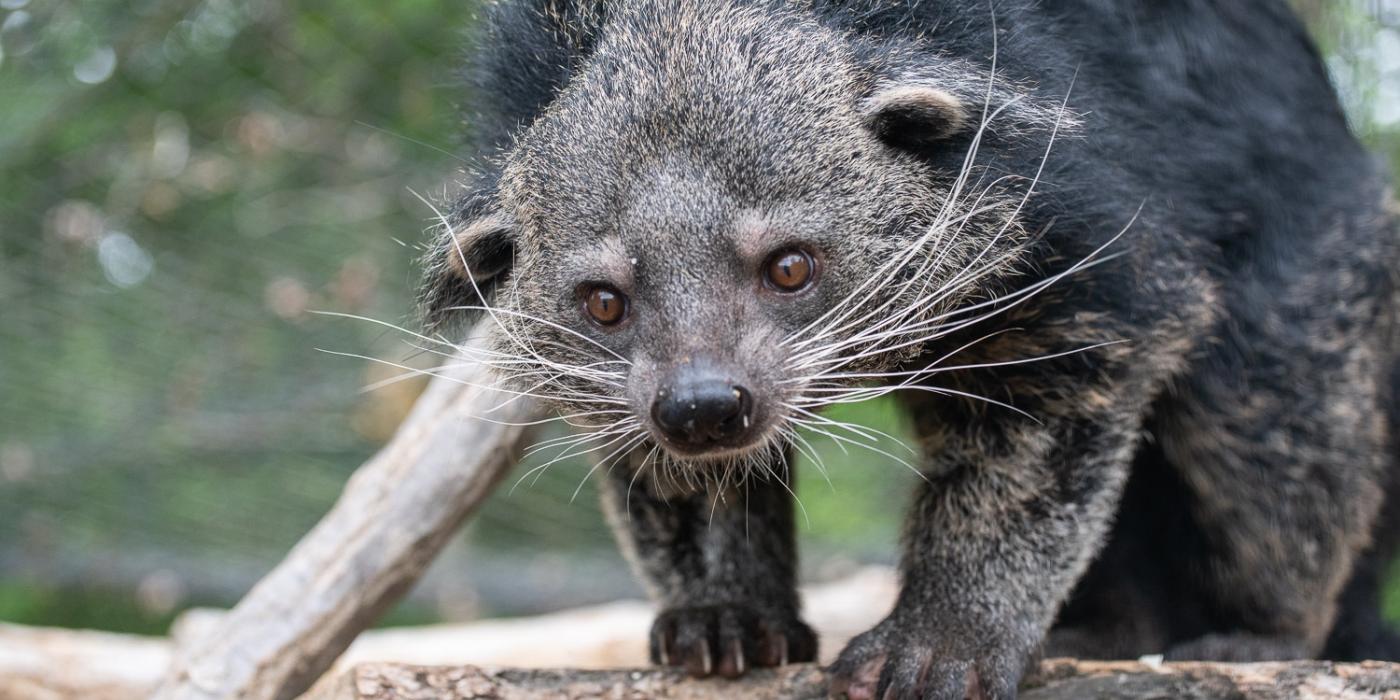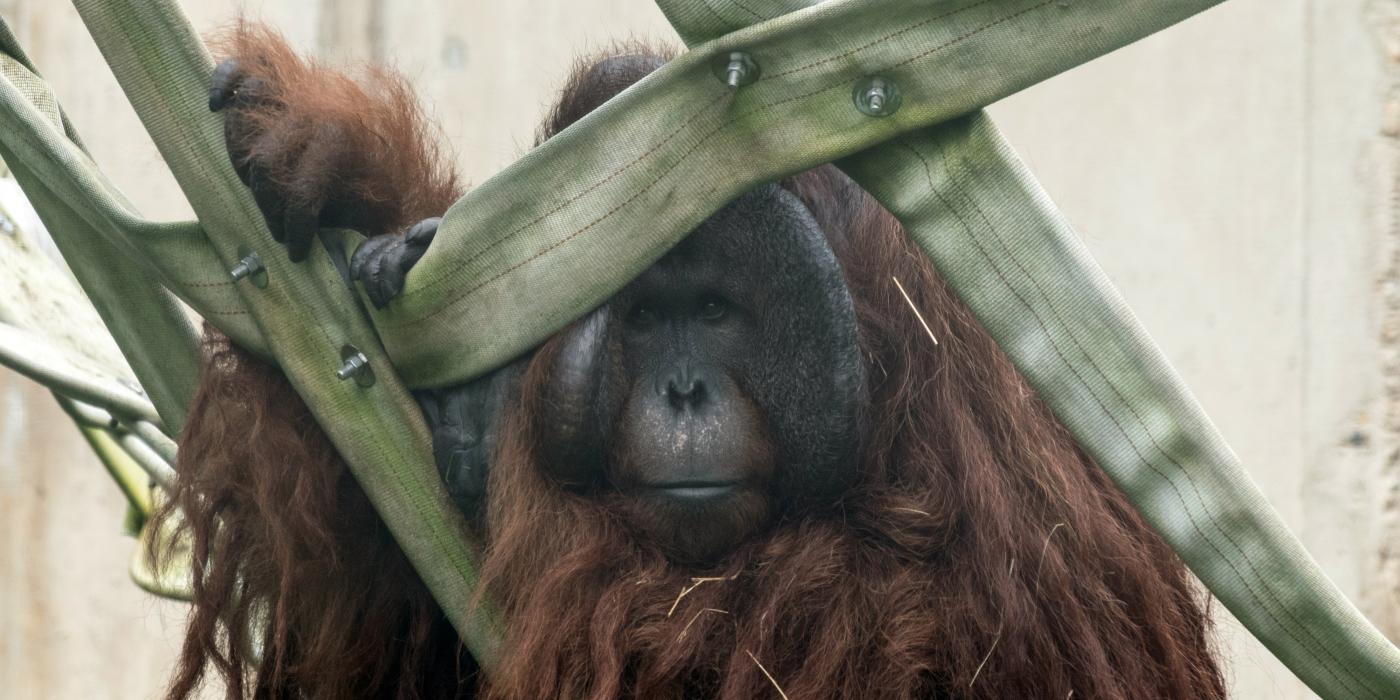#GorillaStory: Happy World Gorilla Day, Zahra!
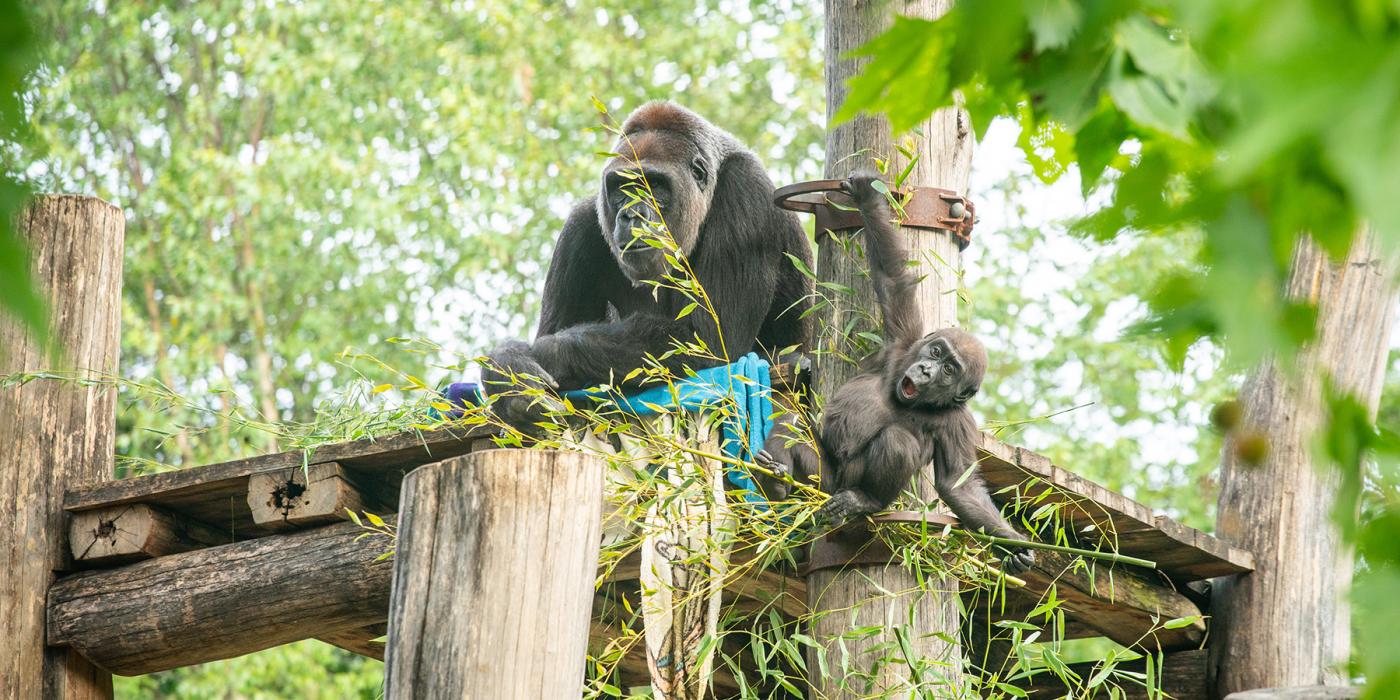
This summer has been eventful for our youngest western lowland gorilla, Zahra, who will be 16 months old on Sept. 27. Over the past few months, it has been so fun to watch her grow and learn to play. Lately, one of her favorite things to do is close her eyes and spin around as fast as she can. Sometimes, she will cap off her spinning sessions by throwing hay up into the air like confetti!
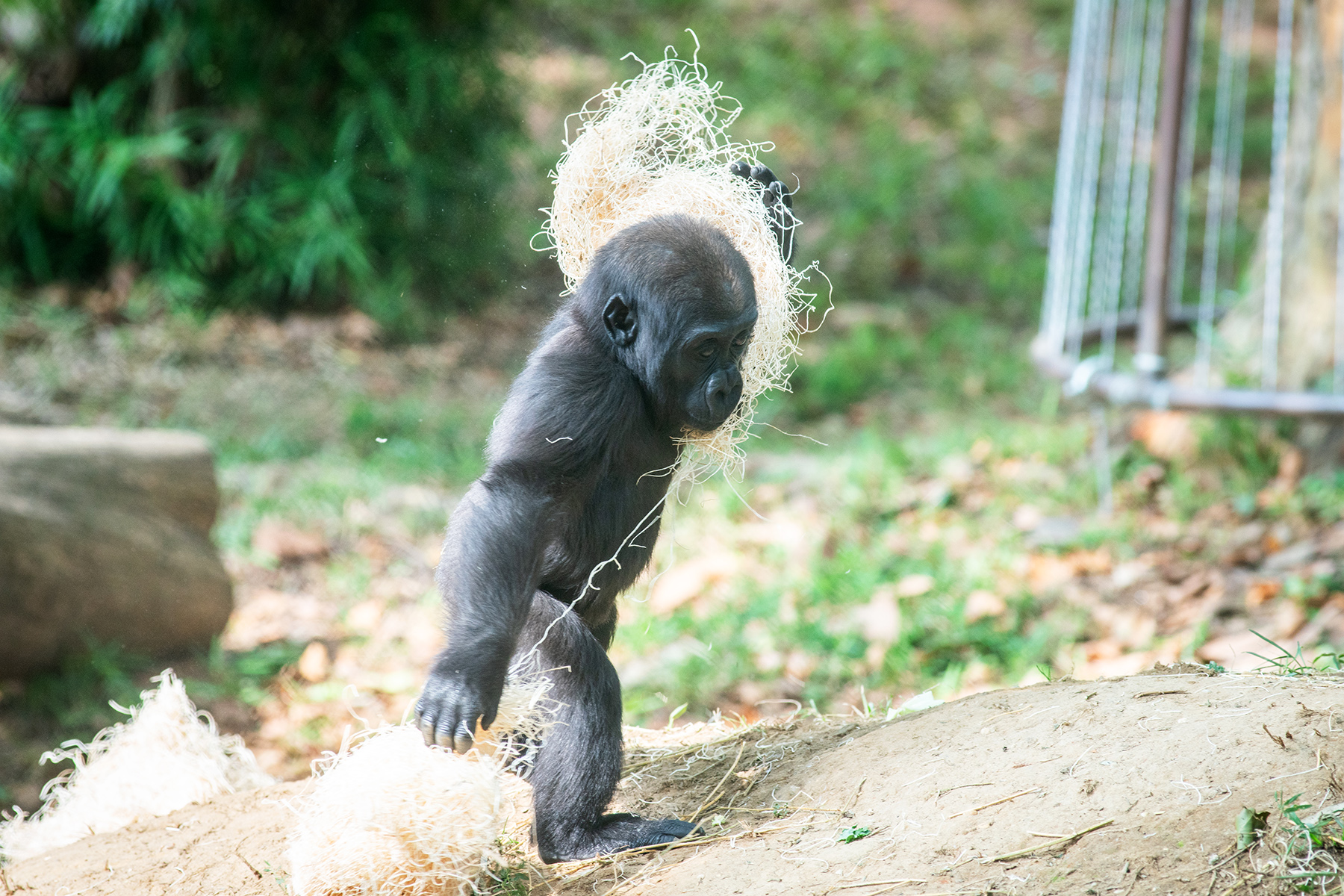
Zahra enjoys tossing hay into the air like confetti!
As noted in our last update, Zahra becomes increasingly independent every day. She intently watches her troopmates and constantly observes her surroundings. Once she is comfortable with who and what is nearby, her personality shines through.
She shows her spunkiness by chest beating, drumming on enrichment items and throwing hay at her big brother, 6-year-old Moke! Often, he reciprocates by starting a play session. They both seem to enjoy a lively wrestling match. Zahra is much smaller than Moke, weighing in at around 19 pounds while he is 138 pounds. Having Moke as her big brother has taught Zahra to be tough!
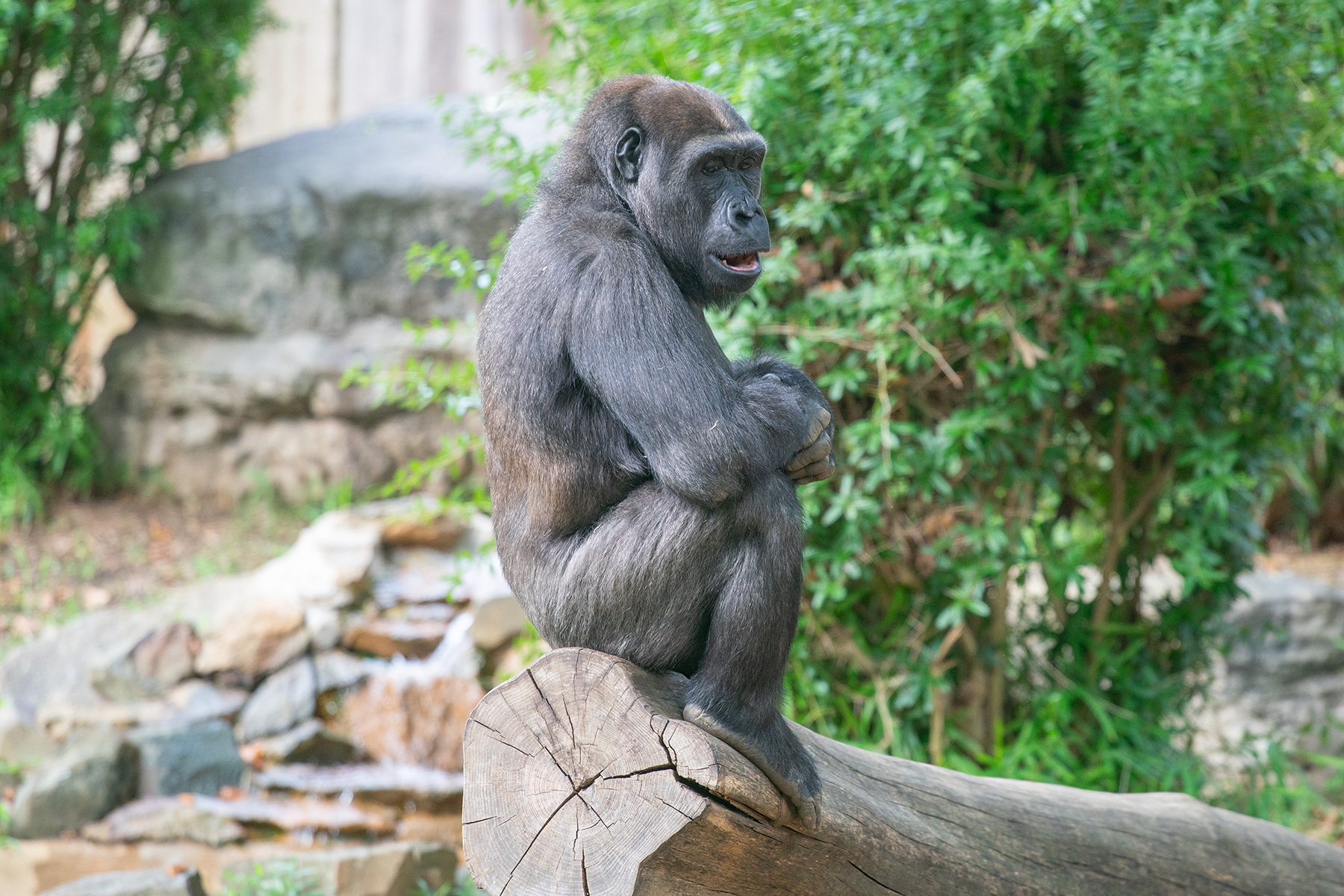
Hi, Moke!
As fun as it is to watch the siblings play, I especially love seeing the bond between Zahra and her mom, Calaya. At this age, Zahra stays in close proximity to Calaya the majority of the day. When I start my workday at 6:30 a.m., Calaya and Zahra are just waking up in their nest together. Once Zahra is awake, she is up and at it, ready to play!
Zahra has watched Calaya and the rest of the troop interact with enrichment items since the day she was born. She has learned essential skills from her observations and attempts to use the enrichment items just like the other gorillas.
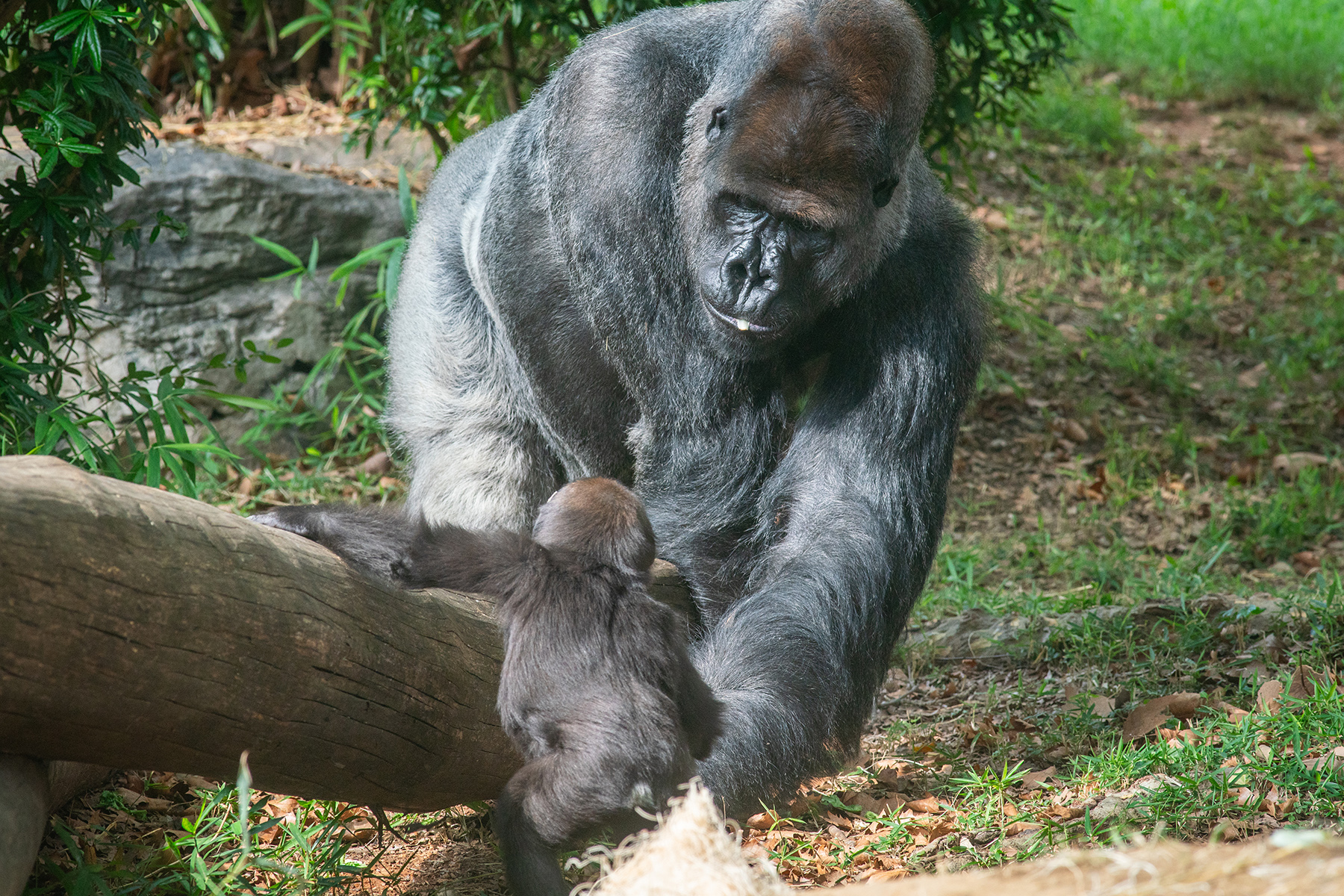
Zahra watches her father Baraka intently while he forages. She is learning how to be a gorilla by observing her troopmates!
These days, Zahra has been using enrichment more and more. And, she has become a pro at foraging! At least twice a day, we scatter pieces of food—cut up veggies, greens and beans, to name a few—for the gorillas to search for and eat. As soon as we give them access to this habitat, Zahra climbs down off of Calaya’s back and searches for food alongside the rest of the troop.
Although Calaya does most of the work when it comes to problem-solving enrichment items (like puzzle feeders), Zahra will try her best to get at the treats. One of the items they receive is a plexiboard. Essentially, it is a small board with holes drilled partially through that can be filled with raisins or peanut butter. Typically, the older gorillas will use a piece of hay or bamboo as a tool for picking out the food. Zahra hasn't quite mastered that skill yet—she just licks the board!
In this video: Zahra enjoys a "cookie", wrestles with her big brother Moke and licks peanut butter off of an enrichment feeder.
At this age, Zahra’s favorite enrichment item is anything she can get her hands on. Calaya will usually take anything of high value if Zahra doesn’t hold on tight. Recently, Zahra enjoyed nibbling on a “cookie.” The main ingredient is mashed primate biscuits, which are specially formulated to provide extra nutrients for a well-balanced diet. Then, we mix in extra goodies. These can be anything from pumpkin or applesauce to oats, peanut butter, raisins or shredded coconut!
Another exciting development over the summer happened between Zahra and Kibibi, our 15-year-old female. When Moke was little, Kibibi was his best buddy and a wonderful playmate. Up to this point, she hasn’t interacted with Zahra much, as Calaya is very protective of her.
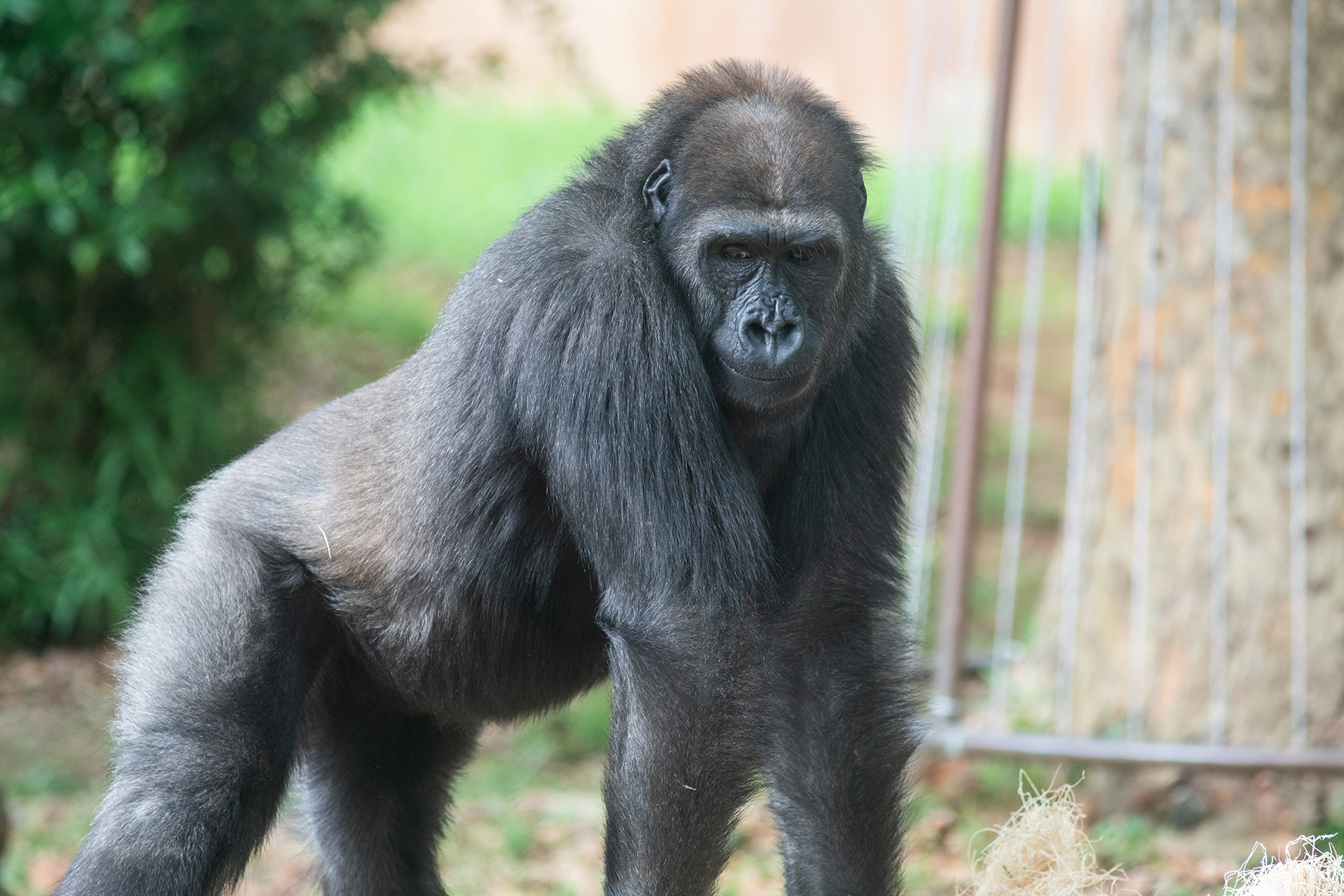
Kibibi explores the outdoor habitat.
As I was walking through the gorilla line one day, I noticed Zahra, Moke and Kibibi hanging out together in one of their indoor habitats. Calaya was across the enclosure. Zahra slowly approached Kibibi and started to climb on her back! It did not last for very long—Calaya came to scoop her up shortly after it happened—but, it is exciting to see Kibibi and Zahra’s relationship start to develop.
As part of our husbandry training program, we interact with the gorillas one-on-one throughout the day and teach them behaviors that can assist us with their daily care. We train all of them using positive reinforcement. That is, we ask them to do a behavior on cue, then reward them with attention and treats when they do. Although the gorillas don’t have to participate, many of them choose to do so.
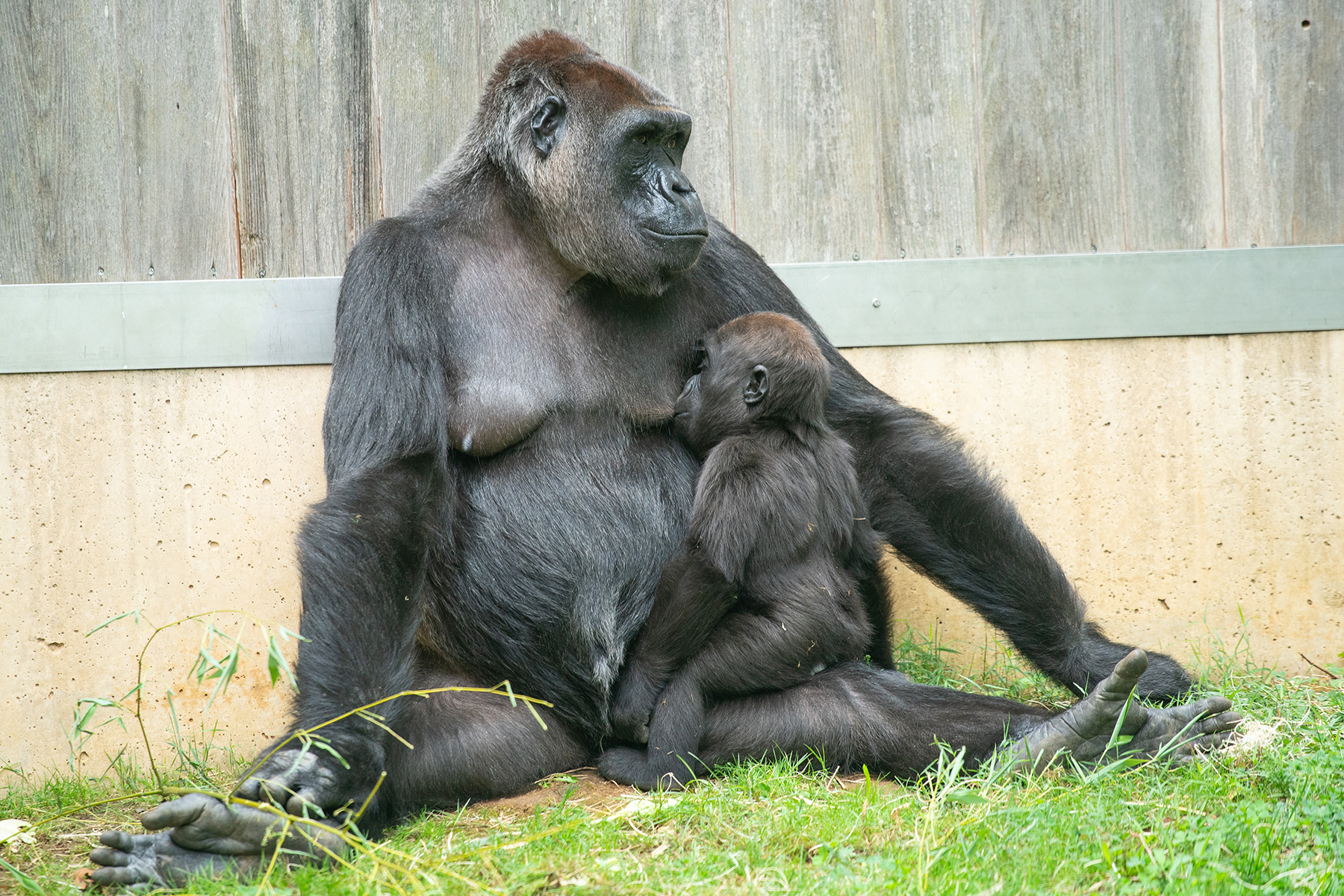
Young western lowland gorillas typically nurse until around age four. Zahra will be 16 months old Sept. 27.
Zahra is beginning to learn behaviors that enable her to voluntarily participate in her own healthcare. Already, she comes up to the mesh and will present different parts of her body to us. This up-close view is important because we can check her mobility and note any issues that might need medical attention.
Each gorilla has a unique personality and learns differently. When it comes to training, we treat each gorilla as an individual, and go at their pace. Zahra is currently learning to participate in voluntary injection—an impressive behavior for a gorilla her age! She has a long list of vaccines to receive, and we are working with our veterinary team to prioritize the ones that are most important to her.
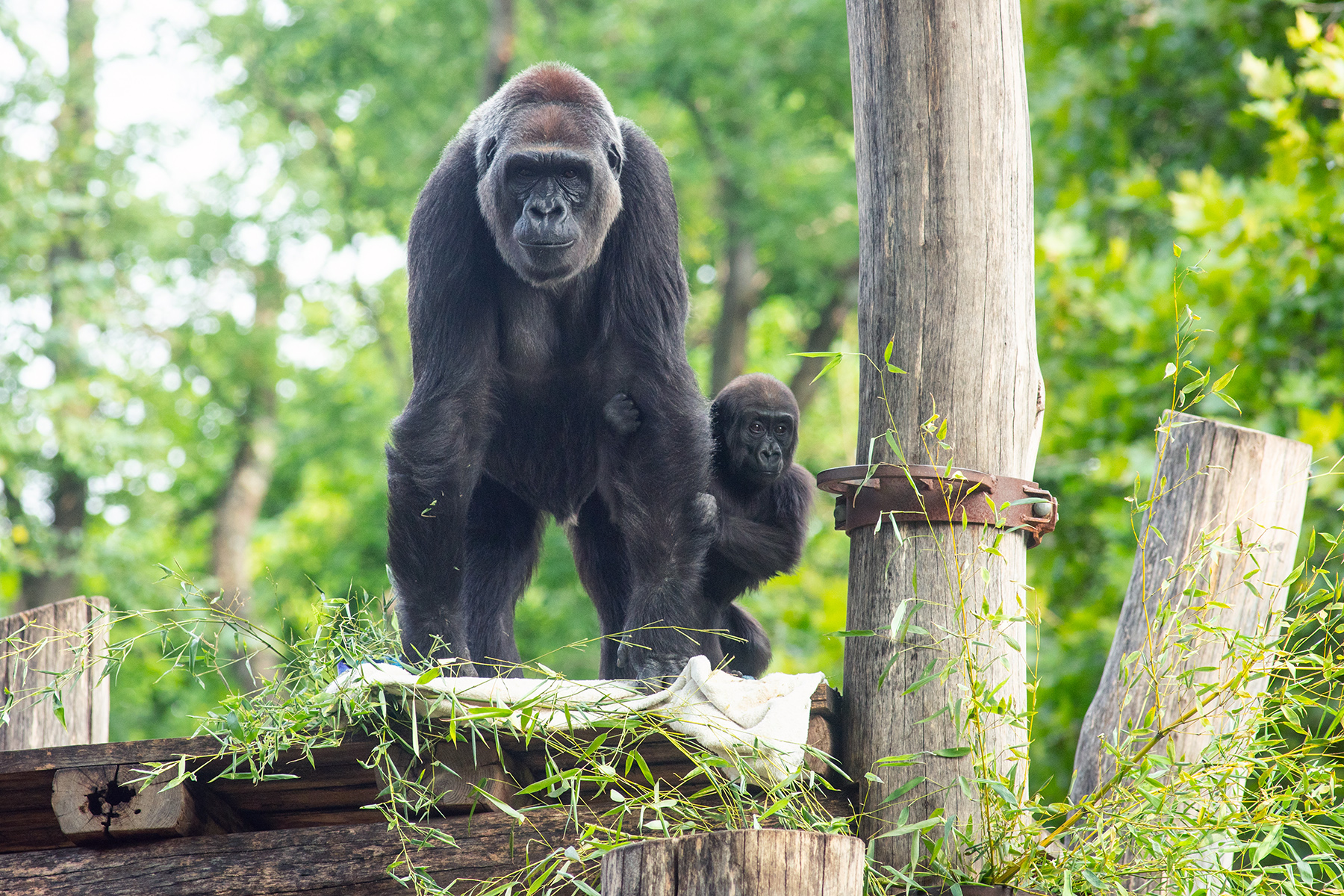
Calaya and Zahra survey their surroundings atop the climbing structure in their outdoor habitat.
During these training sessions, we ask Zahra to present her shoulder to us. Then, we touch her shoulder with a blunted needle. When she does the correct behavior, we say “good” to let her know she’s on the right track. Zahra also receives small pieces of fruit or peanuts for participating. At this point, she doesn’t seem to have a favorite treat—she enjoys them all!
With the beautiful fall weather, our gorilla troop is spending the majority of their days outside and can often be spotted on or around the climbing structure. Zahra especially seems to enjoy hanging out in the hammocks and spends a lot of time playing in them. If you’re trying to spot Zahra, look for Calaya—she is sure to be nearby!
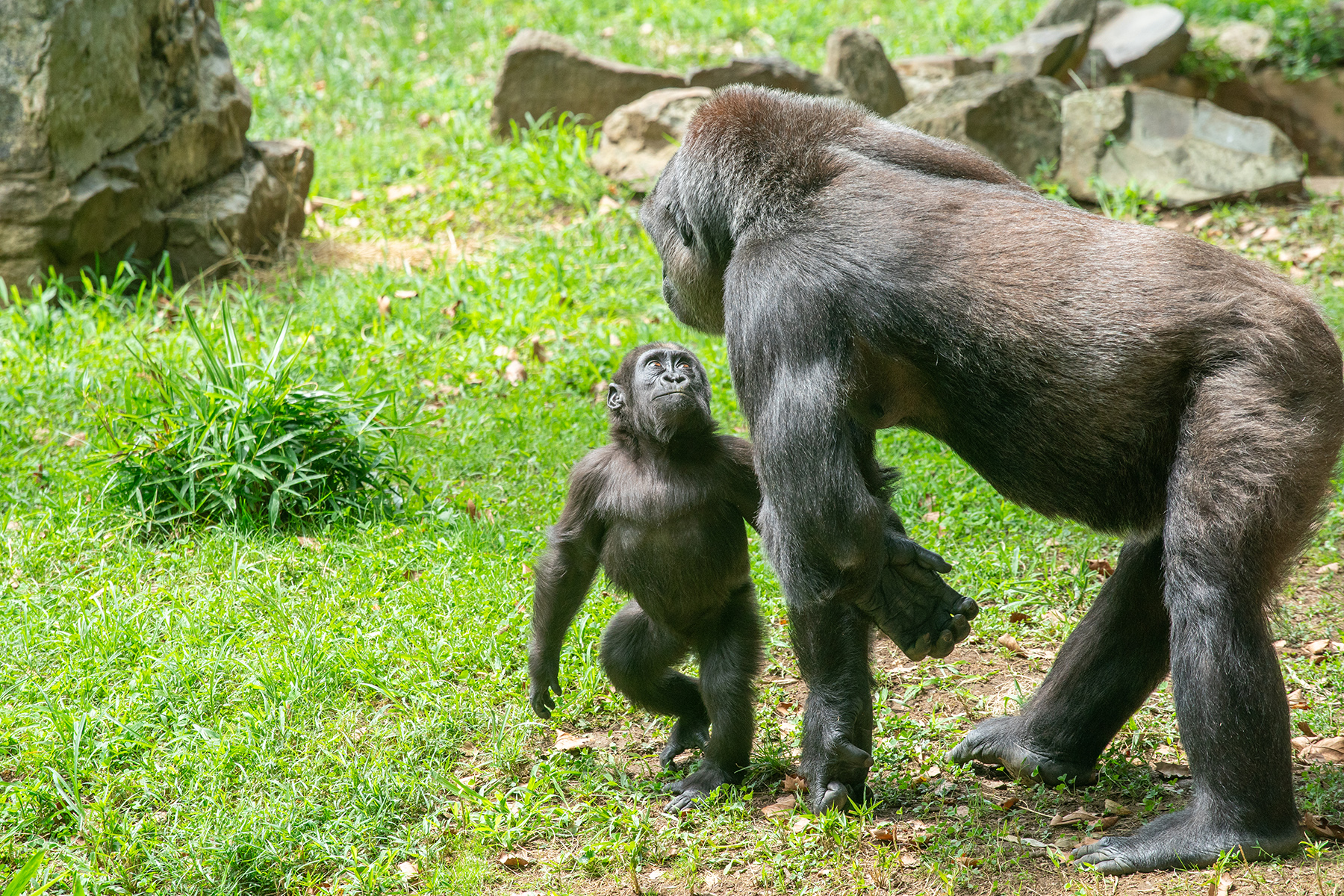
Zahra looks up at her mother, Calaya.
I want to help gorillas? What can I do?
Zahra—and all of our gorillas—are wonderful ambassadors for their counterparts in the wild. Raising awareness about this species is more important than ever, given that the International Union for Conservation of Nature considers them to be critically endangered.
In their native countries of Gabon, Central Africa Republic, Cameroon, Angola, Equatorial Guinea and Democratic Republic of the Congo, western lowland gorillas face many challenges. Their survival is threatened by disease (the Ebola virus), hunting (for commercial bushmeat) and deforestation (for logging and mining). In the past 25 years, their population has declined by more than 60%.
The good news is that you can take action today to help save this species! Share Zahra’s story, and help raise awareness about these gentle and good-natured animals. Taking small actions—think reduce, reuse, recycle—can make a big difference in the lives of Zahra’s wild counterparts.
For instance—did you know that recycling your electronics can help save gorilla habitat? It’s true! One of the metals inside electronic devices that can be recycled is called coltan. It is heat-resistant and can hold a high electrical charge. And, it is mined where gorillas live in the Democratic Republic of the Congo. Recycling electronics can greatly help reduce the need for more expansive coltan mining. Recycle those cell phones, laptops, cameras, gaming consoles, hearing aids and GPS navigation systems that you’re no longer using.
Contributing to a healthier planet for all wildlife would be an excellent way to show our appreciation for these truly great apes, today and every day!
This story appears in the October 2024 issue of National Zoo News. Read previous #GorillaStory updates on Zahra, Moke and their troop here.
Related Species:

